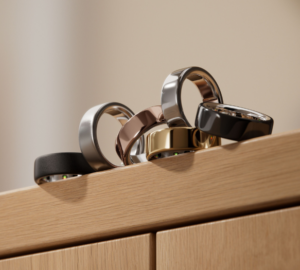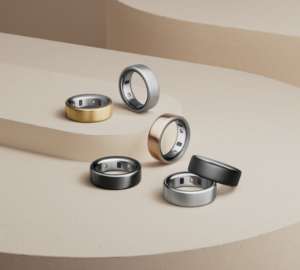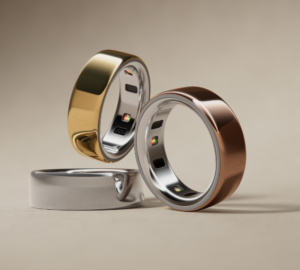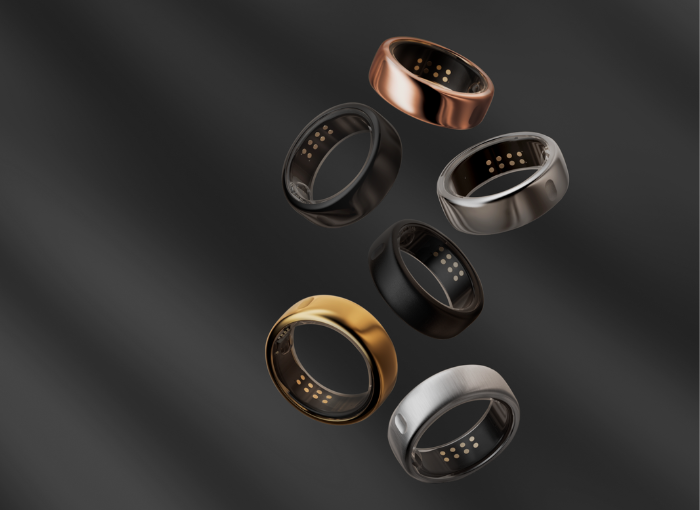Your Oura Ring is packed with technology. Learn all about it with this quick guide.
The Sensors
Oura gives you insights into your sleep, activity, and readiness by listening to your body’s signals with three sensors:
- Infrared photoplethysmography sensors (PPG) for heart rate and respiration
- Negative temperature coefficient (NTC) sensor for body temperature
- 3D accelerometer for movement
The Infrared Photoplethysmography (PPG) Sensors
Oura’s PPG sensors are similar to those found in select hospital devices, which use them to monitor heart rate. The PPG system sends light through LEDs and receives it with a photodiode that captures how pulses of light through your arteries reflect your heart’s activity.
Oura samples 250 times per second and is 99.9% reliable compared to a medical-grade electrocardiogram (ECG).
Oura’s PPG system is designed to maximize your data quality by leveraging sensor placement and infrared light. Positioning LEDs on either side of your finger allows Oura to always measure your clearest signal, unlike watch wearables that have a single-sided light source.
READ MORE: All About Your Resting Heart Rate
Oura’s infrared light enables high-quality readings by penetrating deeper than the green light used in most wearables. Currently, on the Oura App you can see your nighttime heart rate, live heart rate, and workout heart rate.
Oura’s PPG sensor yields a high-fidelity reading of signals from your heart, including resting heart rate, heart rate variability, and respiration.
The Body Temperature Sensor
Oura monitors your nighttime skin temperature with an NTC temperature sensor that can detect changes as small as 0.1° celsius. Oura is one of the few wearables that measure temperature directly against your skin rather than estimating it from your surrounding environment.
Your temperature communicates a wealth of information about your body, such as how well your body is recovering, if you’re coming down with an illness, or if hormones in your body are hard at work.
Oura shows your body temperature in relation to your baseline instead of comparing it to your absolute body temperature. For example, rather than display your temperature as 36.5 °C / 99.5 °F, Oura will show how much higher or lower your temperature is than your baseline (+0.1 °C/°F).
LEARN MORE: How Accurate Is My Oura Temperature Data?
The 3D Accelerometer
The 3D accelerometer captures your activity during the day, your restlessness at night, and helps to identify your sleep stages.
During the day, Oura captures most of your everyday activity and workouts (e.g., walking or running) automatically. Oura provides updates on your activity progress and reminds you to get up and move after long spells of inactivity.
For workouts that are more difficult for accelerometers to capture, because they aren’t step-based or limit hand movement (e.g., yoga or ellipticals), Oura enables you to manually enter activities or import information from a third-party app by syncing with Apple Health or Google Fit.
RELATED: Oura’s New Sleep Staging Algorithm: More Accurate Than Ever Before




